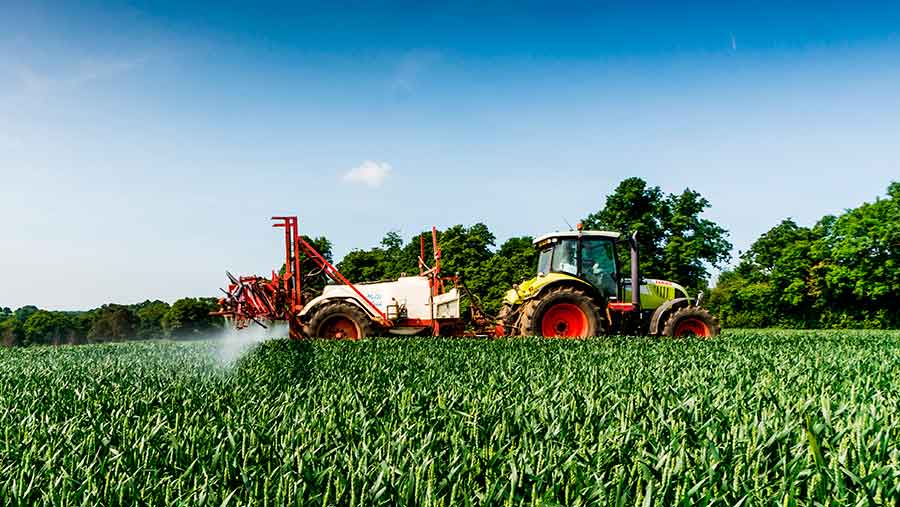Ear blight disease building in wheat crops
 © Malcolm Case-Green
© Malcolm Case-Green Ear blight inoculum has been building over recent weeks with the return of drier and warmer weather, according to Fera’s Phil Jennings.
As part of the Crop Monitor service, which observes the build up of microdochium and fusarium species from growth stage 31 to mid-flowering, microdochium is being seen at the stem base.
In addition, reports are coming in of mycotoxin producer fusarium culmorum on leaf layers, so if there is a wet period at flowering the pathogens could be quickly splashed up the canopy onto the ear.
See also: Angled sprayer nozzles give best wheat ear disease control
Dr Jennings says he would always advocate a fungicide treatment, with a heavy dew sometimes enough to aid ear infection, and timing is critical.
“I wouldn’t go in at growth stage 59 (ear fully emerged), as trials have shown that’s too early. If the forecast is wet, apply a fungicide as soon as the flowers show, ideally at growth stage 63-65,” he adds.
Trade-off
Professor Simon Edwards at Harper Adams agrees that timing is critical, but believes there is a trade-off and urges growers to monitor the weather forecast from GS59 and if wet weather is on its way, getting some protection is essential.
“The longer you leave it before the rain the better, as the fungicides lose efficacy after three to five days. Also consider the acreage you need to cover and prioritise milling wheats,” he says.
Azole fungicides prothioconazole, tebuconazole and metconazole have activity on the ear disease complex, but vary in cost.
Professor Edwards says all can provide good control with accurate timing, with cheaper actives tebuconazole and metconazole providing good value for money. However, prothioconazole gives the widest window of protection and, therefore, makes timing less critical.

